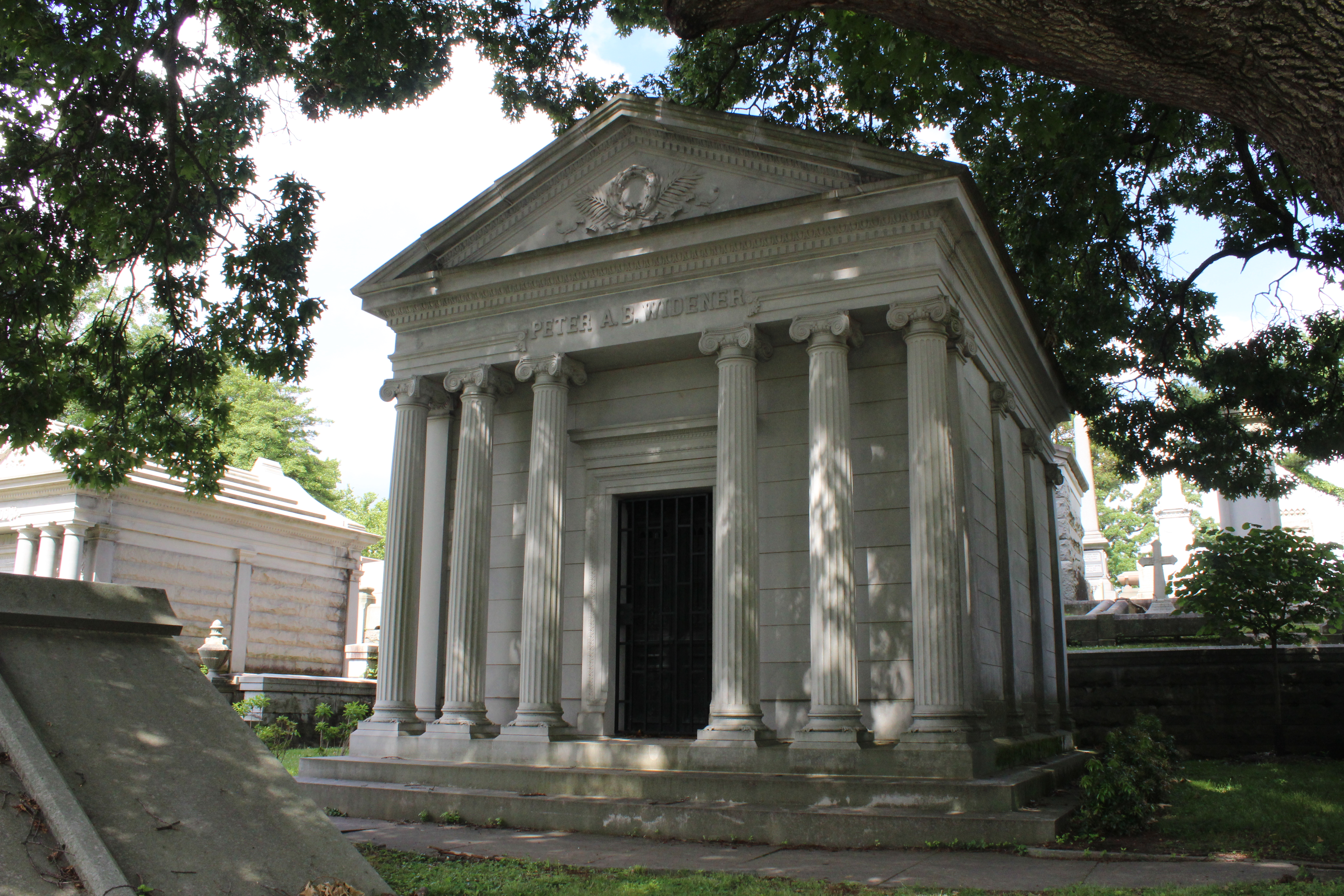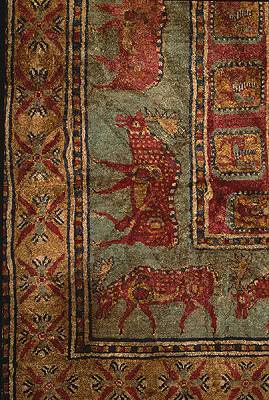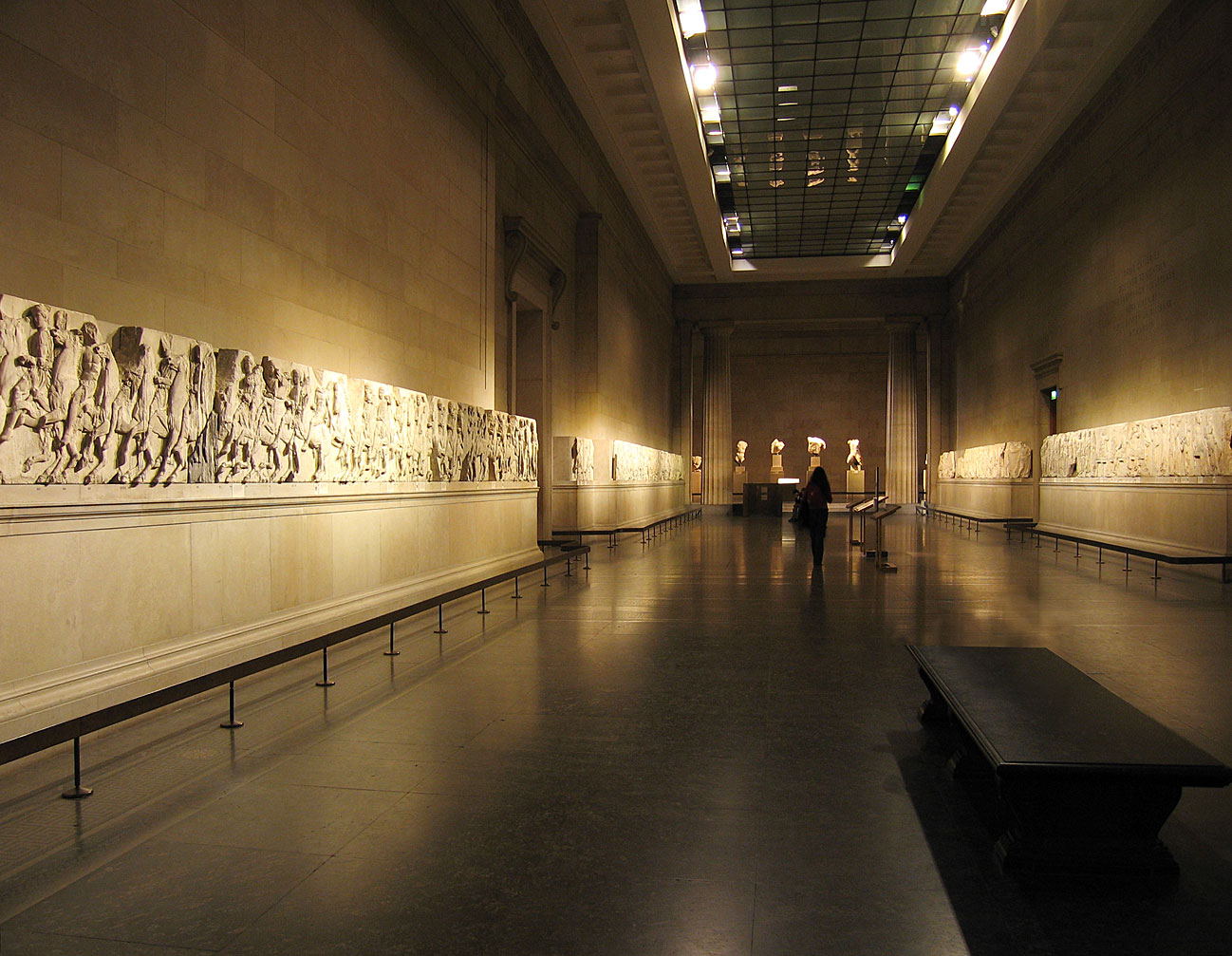|
Whitemarsh Hall
Whitemarsh Hall was a large estate located on of land in Wyndmoor, Pennsylvania, US, and owned by banking executive Edward T. Stotesbury and his wife, Eva. Designed by the Gilded Age architect Horace Trumbauer, it was built in 1921 and demolished in 1980. Before its destruction, the mansion was the third largest private residence in the United States. Today, it is regarded as one of the great losses in American architectural history. Despite the name, Whitemarsh Hall was located in Springfield Township, not in Whitemarsh Township which borders Springfield to the west. History Construction and appointments Designed by the inspired autodidact Beaux-Arts architect Horace Trumbauer between 1916 and 1921, Whitemarsh Hall consisted of 6 stories (3 of which were partly or fully underground), 147 rooms, 45 bathrooms, , and specialty rooms including a ballroom, gymnasium, movie theatre, and even a refrigerating plant. The neo-Georgian mansion had been a wedding present from S ... [...More Info...] [...Related Items...] OR: [Wikipedia] [Google] [Baidu] |
Whitemarsh Hall
Whitemarsh Hall was a large estate located on of land in Wyndmoor, Pennsylvania, US, and owned by banking executive Edward T. Stotesbury and his wife, Eva. Designed by the Gilded Age architect Horace Trumbauer, it was built in 1921 and demolished in 1980. Before its destruction, the mansion was the third largest private residence in the United States. Today, it is regarded as one of the great losses in American architectural history. Despite the name, Whitemarsh Hall was located in Springfield Township, not in Whitemarsh Township which borders Springfield to the west. History Construction and appointments Designed by the inspired autodidact Beaux-Arts architect Horace Trumbauer between 1916 and 1921, Whitemarsh Hall consisted of 6 stories (3 of which were partly or fully underground), 147 rooms, 45 bathrooms, , and specialty rooms including a ballroom, gymnasium, movie theatre, and even a refrigerating plant. The neo-Georgian mansion had been a wedding present from S ... [...More Info...] [...Related Items...] OR: [Wikipedia] [Google] [Baidu] |
El Mirasol (mansion)
El Mirasol was a 37-room Spanish Colonial Revival mansion at 348 North Ocean Boulevard in Palm Beach, Florida. Designed by architect Addison Mizner for financier Edward T. Stotesbury Edward Townsend "Ned" Stotesbury (February 26, 1849 – May 16, 1938) was a prominent investment banker, a partner in Philadelphia's Drexel & Co. and its New York affiliate J. P. Morgan & Co. for over fifty-five years. He was involved in ..., it was completed in 1920. Stotesbury's second wife Lucretia (Eva) Stotesbury was the one who convinced her husband to hire Mizner. She added on to the mansion several times. It extended from the Intracoastal to the ocean, two blocks. At the end it included a 40-car garage, a tea house, an auditorium, and a private zoo. El Mirasol ( The Sunflower ) was demolished in 1959. References {{reflist Palm Beach, Florida Addison Mizner buildings Spanish Colonial Revival architecture in Florida Houses completed in 1919 Houses in Palm Beach County, Flo ... [...More Info...] [...Related Items...] OR: [Wikipedia] [Google] [Baidu] |
Lynnewood Hall
Lynnewood Hall is a 110-room Neoclassical Revival mansion in Elkins Park, Montgomery County, Pennsylvania. Vacant today, it was designed by architect Horace Trumbauer for industrialist Peter A. B. Widener and built between 1897 and 1900. Considered the largest surviving Gilded Age mansion in the Philadelphia area, it housed one of the most important Gilded Age private art collections of European masterpieces and decorative arts, which had been assembled by Widener and his younger son, Joseph E. Widener. Peter Widener died at Lynnewood Hall at the age of 80 on November 6, 1915, after prolonged poor health. He was predeceased by his elder son George Dunton Widener and grandson Harry Elkins Widener, both of whom died when RMS ''Titanic'' sank in 1912. The structure changed hands a few times over the subsequent decades, with large portions of the estate grounds sold off in the 1940s, and has been predominantly vacant since 1952, when it was purchased by a theological seminary that s ... [...More Info...] [...Related Items...] OR: [Wikipedia] [Google] [Baidu] |
Peter Arrell Brown Widener
Peter Arrell Browne Widener (November 13, 1834 – November 6, 1915) was an American businessman, art collector, and patriarch of the Widener family of Philadelphia, Pennsylvania. Widener was ranked #29 on the ''American Heritage'' list of the forty richest Americans in history, with a net worth at death of $23 billion to $25 billion (in 1998 dollars). Early life The son of a Philadelphia butcher, Widener was born on November 13, 1834, to Johannes Widener and Sarah Fulmer. He was named after Peter Arrell Browne (1782–1860), a noted lawyer in 19th-century Philadelphia. Career During the Civil War, Widener won a contract to supply mutton to all Union Army troops within 10 miles of Philadelphia. The city was a major transportation hub for troop deployment, and the location of many of the largest Union military hospitals. Widener invested his $50,000 profit in horse-drawn city streetcar lines. He grew to prominence in Philadelphia politics, and had become the City Treasurer b ... [...More Info...] [...Related Items...] OR: [Wikipedia] [Google] [Baidu] |
André Le Nôtre
André Le Nôtre (; 12 March 1613 – 15 September 1700), originally rendered as André Le Nostre, was a French landscape architect and the principal gardener of King Louis XIV of France. He was the landscape architect who designed the gardens of the Palace of Versailles; his work represents the height of the French formal garden style, or ''jardin à la française''. Prior to working on Versailles, Le Nôtre collaborated with Louis Le Vau and Charles Le Brun on the park at Vaux-le-Vicomte. His other works include the design of gardens and parks at Chantilly, Fontainebleau, Saint-Cloud and Saint-Germain. His contribution to planning was also significant: at the Tuileries he extended the westward vista, which later became the avenue of the Champs-Élysées and comprise the ''Axe historique''. Biography Early life André Le Nôtre was born in Paris, into a family of gardeners. Pierre Le Nôtre, who was in charge of the gardens of the Palais des Tuileries in 1572, may have ... [...More Info...] [...Related Items...] OR: [Wikipedia] [Google] [Baidu] |
Jacques Gréber
Jacques-Henri-Auguste Gréber (10 September 1882 – 5 June 1962) was a French architect specializing in landscape architecture and urban design. He was a strong proponent of the Beaux-Arts style and a contributor to the City Beautiful movement, particularly in Philadelphia and Ottawa. Early life and education Gréber was born in Paris, the son of sculptor Henri-Léon Gréber, and attended the École des Beaux-Arts in that city.E. Delaire ''et al.'' ''Les architectes élèves de l'école des Beaux-Arts, 1793–1907'' noted in James T. Maher, ''The Twilight of Splendor: Chronicles of the Age of American Palaces'' 1975:65 note 78. He was a fine student and won several prizes during his training at the École. Early Private Commissions Following graduation in 1908, he left for the United States, where American architects who had trained at the École hired him to help design French gardens for the large houses they built in New England. He designed many private gardens in the U ... [...More Info...] [...Related Items...] OR: [Wikipedia] [Google] [Baidu] |
Oriental Rug
An oriental rug is a heavy textile made for a wide variety of utilitarian and symbolic purposes and produced in " Oriental countries" for home use, local sale, and export. Oriental carpets can be pile woven or flat woven without pile, using various materials such as silk, wool, and cotton. Examples range in size from pillows to large, room-sized carpets, and include carrier bags, floor coverings, decorations for animals, Islamic prayer rugs ('Jai'namaz'), Jewish Torah ark covers (''parochet''), and Christian altar covers. Since the High Middle Ages, oriental rugs have been an integral part of their cultures of origin, as well as of the European and, later on, the North American culture. Geographically, oriental rugs are made in an area referred to as the “Rug Belt”, which stretches from Morocco across North Africa, the Middle East, and into Central Asia and northern India. It includes countries such as northern China, Tibet, Turkey, Iran, the Maghreb in the west, the Cauca ... [...More Info...] [...Related Items...] OR: [Wikipedia] [Google] [Baidu] |
The Huntington Library
The Huntington Library, Art Museum and Botanical Gardens, known as The Huntington, is a collections-based educational and research institution established by Henry E. Huntington (1850–1927) and Arabella Huntington (c.1851–1924) in San Marino, California, United States. In addition to the library, the institution houses an extensive art collection with a focus on 18th- and 19th-century European art and 17th- to mid-20th-century American art. The property also includes approximately of specialized botanical landscaped gardens, most notably the "Japanese Garden", the "Desert Garden", and the "Chinese Garden" (Liu Fang Yuan). History As a landowner, Henry Edwards Huntington (1850–1927) played a major role in the growth of Southern California. Huntington was born in 1850, in Oneonta, New York, and was the nephew and heir of Collis P. Huntington (1821–1900), one of the famous "Big Four" railroad tycoons of 19th century California history. In 1892, Huntington relocated t ... [...More Info...] [...Related Items...] OR: [Wikipedia] [Google] [Baidu] |
Henry E
Henry may refer to: People *Henry (given name) *Henry (surname) * Henry Lau, Canadian singer and musician who performs under the mononym Henry Royalty * Portuguese royalty ** King-Cardinal Henry, King of Portugal ** Henry, Count of Portugal, Henry of Burgundy, Count of Portugal (father of Portugal's first king) ** Prince Henry the Navigator, Infante of Portugal ** Infante Henrique, Duke of Coimbra (born 1949), the sixth in line to Portuguese throne * King of Germany ** Henry the Fowler (876–936), first king of Germany * King of Scots (in name, at least) ** Henry Stuart, Lord Darnley (1545/6–1567), consort of Mary, queen of Scots ** Henry Benedict Stuart, the 'Cardinal Duke of York', brother of Bonnie Prince Charlie, who was hailed by Jacobites as Henry IX * Four kings of Castile: **Henry I of Castile **Henry II of Castile **Henry III of Castile **Henry IV of Castile * Five kings of France, spelt ''Henri'' in Modern French since the Renaissance to italianize the name an ... [...More Info...] [...Related Items...] OR: [Wikipedia] [Google] [Baidu] |
Joseph Duveen
Joseph Duveen, 1st Baron Duveen (14 October 1869 – 25 May 1939), known as Sir Joseph Duveen, Baronet, between 1927 and 1933, was a British art dealer who was considered one of the most influential art dealers of all time. Life and career Joseph Duveen was British by birth, the eldest of thirteen children of Rosetta (Barnett) and Sir Joseph Joel Duveen, a Dutch-Jewish immigrant who had set up a prosperous import business in Hull. The Duveen Brothers firm became very successful and became involved in trading antiques. Duveen Senior died in 1908; Joseph took over the business, working in partnership with his late father's brother Henry J. Duveen. He had received a thorough and stimulating education at University College School. He moved the Duveen company into the risky, but lucrative, trade in paintings and quickly became one of the world's leading art dealers due to his good eye, sharpened by his reliance on Bernard Berenson, and skilled salesmanship. His success is famousl ... [...More Info...] [...Related Items...] OR: [Wikipedia] [Google] [Baidu] |
Furniture
Furniture refers to movable objects intended to support various human activities such as seating (e.g., stools, chairs, and sofas), eating (tables), storing items, eating and/or working with an item, and sleeping (e.g., beds and hammocks). Furniture is also used to hold objects at a convenient height for work (as horizontal surfaces above the ground, such as tables and desks), or to store things (e.g., cupboards, shelves, and drawers). Furniture can be a product of design and can be considered a form of decorative art. In addition to furniture's functional role, it can serve a symbolic or religious purpose. It can be made from a vast multitude of materials, including metal, plastic, and wood. Furniture can be made using a variety of woodworking joints which often reflects the local culture. People have been using natural objects, such as tree stumps, rocks and moss, as furniture since the beginning of human civilization and continues today in some households/campsites. Ar ... [...More Info...] [...Related Items...] OR: [Wikipedia] [Google] [Baidu] |






